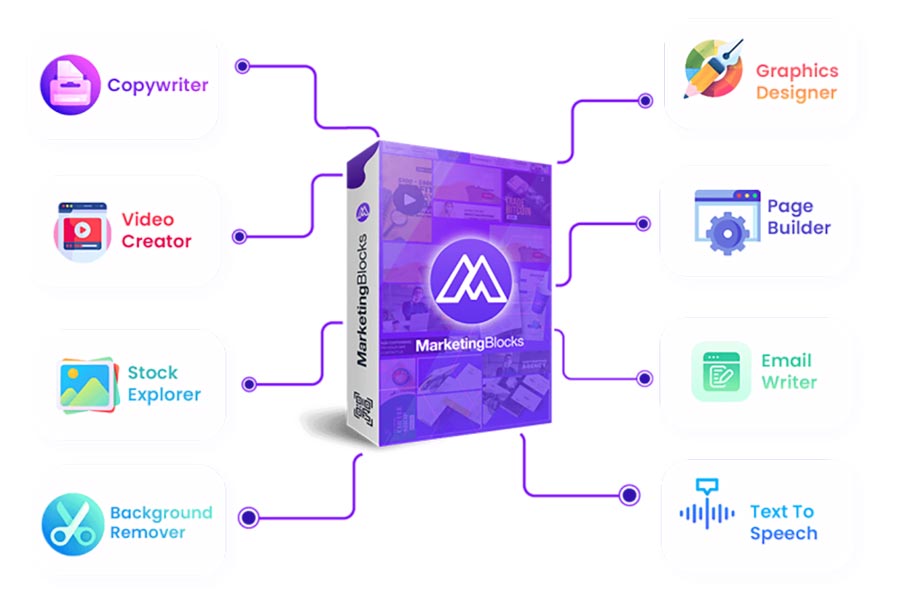Emotional Marketing: Forge Stronger Customer Connections

Introduction
Emotional marketing is a strategy that leverages emotions to build strong connections between brands and customers. This type of marketing taps into customers’ feelings, attitudes, and beliefs to create an emotional bond that can drive brand loyalty and increase customer lifetime value. Emotional marketing can be used in various forms, including advertising, content marketing, and social media, to create an emotional response that resonates with customers.
Emotional marketing has become increasingly important in today’s competitive marketplace. With consumers exposed to overwhelming marketing messages each day, it’s becoming harder for brands to capture their attention and stand out. Emotional marketing allows brands to cut through the noise and connect with customers on a deeper level. By making an emotional connection, brands can differentiate themselves from their competitors and create a loyal customer base that will stay with them for the long term.
“Emotionally connected customers are 52% more valuable to a business than those who are just satisfied.”
— Harvard Business Review
This blog aims to provide an in-depth look at emotional marketing and how it can help businesses create stronger customer connections. We’ll explore the different emotions that drive purchases and how to connect emotionally with your target audience. We’ll also provide actionable tips and strategies for using emotional marketing in your business and examples of successful marketing campaigns from well-known brands. By the end of this blog, you’ll better understand the power of emotional marketing and how it can help your business succeed in today’s competitive marketplace.
Understanding Emotions
Types of emotions
Emotions can be broadly categorised into two types: positive and negative. Positive emotions include happiness, joy, love, excitement, and gratitude. Negative emotions have sadness, anger, fear, frustration, and disappointment. Each of these emotions can be further broken down into more specific subcategories, such as awe, contentment, or envy. Understanding the types of emotions that exist and how they are related to one another can help businesses create emotionally resonant marketing campaigns.
Emotions that drive purchases
Several emotions have been found to be particularly effective at driving consumer behaviour.
These include:
- Fear: Fear is a powerful motivator that can drive people to take action. Brands can use fear to create a sense of urgency or promote a product or service to solve a particular problem or threat.
- Happiness: People naturally seek out experiences that make them feel happy. Brands can leverage this emotion by promoting their products or services to enhance or create happiness.
- Trust: Trust is essential for building strong relationships with customers. Brands that establish trust with their customers through honest, transparent, and reliable communication can create a loyal customer base.
- Exclusivity: People are drawn to exclusive products or experiences that make them feel special. Brands can leverage this emotion by creating limited-time offers, special editions, or personalised experiences.
“Brands that evoke an emotional response from their customers outperform their competitors by 85% in sales.”
— Motista
How emotions affect consumer behaviour
Emotions play a significant role in shaping consumer behaviour. Research has found that emotions are a key factor in decision-making, with up to 90% of all purchasing decisions being driven by emotions. Emotions can influence everything from product perception to brand loyalty and affect how much customers are willing to pay for a product or service. Emotions can also impact how customers perceive and remember brand messaging, with emotionally resonant messages being more likely to be recognised and shared than factual information alone.
By understanding the different types of emotions that exist, the emotions that drive consumer behaviour, and how emotions can impact consumer decision-making, businesses can create marketing campaigns that tap into customers’ emotions to create a solid emotional connection. In the next section, we’ll explore how to create emotionally resonant marketing campaigns that connect with customers on a deeper level.
Creating an Emotional Connection
Identifying your target audience
To establish an emotional connection with your customers, the initial step is to identify your target audience. This involves gaining a thorough understanding of your ideal customer’s demographics, psychographics, interests, and behaviours. By having a clear understanding of your target audience, you can develop messaging and content that speaks directly to them and resonates with their emotions.
Understanding their pain points
In order to forge an emotional connection, it is crucial to comprehend the pain points and challenges that your target audience is grappling with. This entails conducting research, surveys, or interviews to identify the issues that your customers are attempting to address. By gaining an understanding of their pain points, you can create messaging that directly addresses their needs and emotions, and builds a stronger emotional connection with them.
Developing a brand personality
Your brand’s personality refers to the collection of human traits and characteristics that are associated with your brand. Creating a brand personality requires identifying the values, traits, and attributes that are most significant to your brand and resonate with your target audience. By developing a brand personality that resonates with your customers, you can create a deeper emotional connection that goes beyond the utilitarian benefits of your products or services.
“Brands that connect emotionally with their customers see a 200% increase in word-of-mouth marketing, compared to those that do not.”
— Keller Fay Group
Crafting a brand story
A brand story is a storyline that conveys your brand’s values, history, and purpose. By arousing emotions such as empathy, inspiration, or nostalgia, a captivating brand story can establish an emotional connection with your customers. Crafting a powerful brand story necessitates identifying the key themes and values that are most significant to your brand and presenting them in a manner that resonates with your target audience.
Developing a unique selling proposition
Your unique selling proposition is the unique benefit that your product or service provides to your customers. A strong unique selling proposition can create an emotional connection by communicating your product or service’s value and how it solves your customers’ pain points. To develop a strong unique selling proposition, you must understand your target audience, their pain points, and what sets your brand apart from your competitors.
By adhering to these steps, you can forge a brand that strikes a chord with your intended audience and establishes an emotional bond that transcends the utilitarian advantages of your offerings. The subsequent section will delve into how to leverage emotional marketing to develop potent marketing campaigns.
Emotional Marketing Strategies
Using storytelling to connect emotionally

Storytelling is a powerful way to create an emotional connection with your customers. By telling stories that are relatable and emotionally resonant, you can tap into your customers’ emotions and create a lasting connection. To use storytelling in your marketing, consider the following:
- Identify the emotional themes that are most important to your brand and that resonates with your target audience
- Develop narratives that highlight these themes and that are relatable to your customers
- Use multimedia content such as videos, images, and infographics to bring your stories to life
- Use storytelling consistently across your marketing channels to reinforce your brand message and create a cohesive brand experience
Using user-generated content (UGC)
User-generated content (UGC) is content that is created by your customers rather than by your brand. UGC is a powerful way to make an emotional connection with your customers because it highlights the experiences and perspectives of real people. To use UGC in your marketing, consider the following:
- Encourage your customers to share their stories, photos, and videos on social media using a branded hashtag
- Repurpose UGC into your marketing campaigns, such as featuring customer reviews on your website or using customer photos in your social media ads
- Use UGC to showcase the emotional benefits of your products or services, such as how your product has improved your customers’ lives or helped them overcome a challenge
Using social media to connect with customers
Leveraging social media can be an effective means of fostering emotional connections with your customers. By utilising social media to engage with your customers, you can establish relationships and cultivate a community around your brand. To use social media in your marketing, consider the following:
- Employ social media to listen to your customers’ feedback and address their inquiries and comments.
- Use social media to showcase your brand personality and values, such as by sharing behind-the-scenes photos or videos of your team
- Use social media to create emotional campaigns, such as by asking your followers to share their stories or by running a social media contest that highlights the emotional benefits of your product or service
“Emotions drive up to 90% of all purchasing decisions.”
— Harvard Business Review
Creating emotional ads
Advertising is a powerful way to create an emotional connection with your customers because it allows you to tell a story and evoke emotions quickly. To create emotional ads, consider the following:
- Use emotional themes and narratives that are consistent with your brand values, and that resonate with your target audience
- Use multimedia content such as videos, images, and music to create an emotional experience
- Use calls-to-action that are aligned with the emotional theme of your ad, such as asking viewers to share their own stories or to take action to support a cause
Using influencers to create emotional connections
Influencer marketing is a powerful way to create emotional connections with your customers because it allows you to tap into the influence and authority of trusted individuals. To use influencer marketing in your marketing, consider the following:
- Identify influencers who are aligned with your brand values and that have a solid emotional connection with your target audience
- Develop campaigns that showcase the emotional benefits of your products or services and that highlight the influencer’s experience or endorsement
- Use influencer marketing consistently across your marketing channels to reinforce your brand message and create a cohesive brand experience
Using these emotional marketing strategies, you can create a solid emotional connection with your customers and build long-term loyalty and advocacy for your brand. In the next section, we’ll explore the benefits of emotional marketing and how to measure its impact.
Measuring Emotional Marketing
KPIs for measuring emotional marketing
Measuring the impact of emotional marketing is essential to understand how it resonates with your target audience and to optimise your marketing efforts. Key performance indicators (KPIs) that can be used to measure emotional marketing include the following:
- Brand awareness: The extent to which your brand is recognised and remembered by your target audience
- Brand sentiment: The emotional connection that your customers have with your brand, such as positive or negative feelings
- Customer engagement: The level of interaction and participation that your customers have with your brands, such as social media likes, comments, and shares
- Customer loyalty: The degree to which your customers continue to purchase from your brand and recommend it to others
- Customer lifetime value: The total value of a customer’s purchases over their lifetime, which reflects their level of loyalty and satisfaction with your brand
Understanding the importance of data analysis

To measure emotional marketing effectively, it is essential to analyse data related to your marketing efforts and consumer behaviour. By analysing data, you can identify patterns and trends, understand your customers’ preferences and behaviour, and make data-driven decisions to optimise your marketing efforts. Some key data analysis techniques that can be used to measure emotional marketing include the following:
- A/B testing: Testing different marketing messages, visuals, or campaigns to identify the most effective approach
- Customer surveys: Gathering feedback from customers about their emotional connection with your brand, their pain points, and their preferences
- Social media listening: Monitoring social media channels to understand customer sentiment and gather feedback on your marketing efforts
- Web analytics: Analysing website traffic, page views, and other metrics to understand customer behavior and preferences
Understanding consumer behaviour through data analysis
Data analysis is crucial not only for measuring the impact of emotional marketing but also for understanding consumer behaviour and preferences. By understanding how your customers think and feel, you can tailor your marketing efforts to create a stronger emotional connection with them. Some key insights that can be gained through data analysis include the following:
- Understanding your customers’ pain points and challenges and how your product or service can solve them
- Identifying the emotional themes and narratives that resonate most strongly with your target audience
- Identifying the marketing channels and messages that are most effective in creating an emotional connection with your customers
- Understanding the impact of your marketing efforts on customer behaviour and loyalty
Using data analysis to measure emotional marketing and understand consumer behaviour, you can optimise your marketing efforts to create stronger emotional connections with your customers and drive business results.
Conclusion
In today’s competitive business environment, emotional marketing has become more critical than ever for creating strong customer connections. Understanding the emotions that drive consumer behaviour and tailoring your marketing efforts to develop emotional relationships can build brand loyalty, increase customer retention, and drive business growth.
If you haven’t already, it’s time to start incorporating emotional marketing into your strategy. Begin by identifying your target audience, understanding their pain points and emotions, and developing a brand personality and story that resonates with them. Then, consider using emotional marketing strategies such as storytelling, user-generated content, social media, emotional ads, and influencers to create stronger emotional connections with your customers.
Establishing emotional bonds with customers is more than just selling products or services; it entails creating long-term relationships based on trust, empathy, and shared values. By prioritising your customers’ emotional needs and desires, you can develop marketing campaigns that strike a deeper chord and inspire them to take action.
Remember, emotional marketing is not a one-time tactic – it’s a continuous process of listening, understanding, and engaging with your customers on an emotional level. Doing so can create a powerful brand that inspires loyalty, advocacy, and growth for years.
In conclusion, emotional marketing is a powerful tool for connecting with customers beyond the transactional level. By understanding the emotions that drive consumer behaviour and tailoring your marketing efforts to create emotional connections, you can build a strong brand that resonates with your target audience and inspires them to take action. So, take the time to understand your customers’ emotions, develop a strong brand personality and story, and implement emotional marketing strategies to create deeper connections with your customers.
Be sure to check out our other related posts if you enjoyed this one:
- Supercharge Your Business: Mastering Cross-Channel Marketing Magic!
- Influence: The Psychology of Persuasion by Robert B. Cialdini – A Word Marketing Book Summary
- Building Trust: Brand Awareness & Reputation
- Unlocking Success: Data-Driven Targeted Advertising
- The AI Revolution: Transforming Marketing & Advertising
- Introducing Our New and Improved Dewalist Marketplace Design
- Ad Ethics: Balancing Persuasion with Responsibility
- Email Showdown: Mandrill vs Mailchimp Features
- The Future of Digital Out-of-Home (DOOH) Advertising
- Revolutionising Marketing with Virtual & Augmented Reality
Sign up for updates on this blog and our latest marketing posts if you enjoyed reading this one.
Share our blog content with your friends and colleagues via Facebook, Twitter, Pinterest, LinkedIn, email or WhatsApp links below and help them stay informed about the latest insights on business, marketing, finance, lifestyle, and society. Let’s build a knowledge-sharing community and empower each other to achieve our goals.
Credits
- Featured image by rawpixel.com on Freepik.
- Emotional creation photo by Ron Lach on Pexels.
- Emotional marketing strategies image by KamranAydinov on Freepik.
- Emotional marketing measurement photo by Lukas on Pexels.










